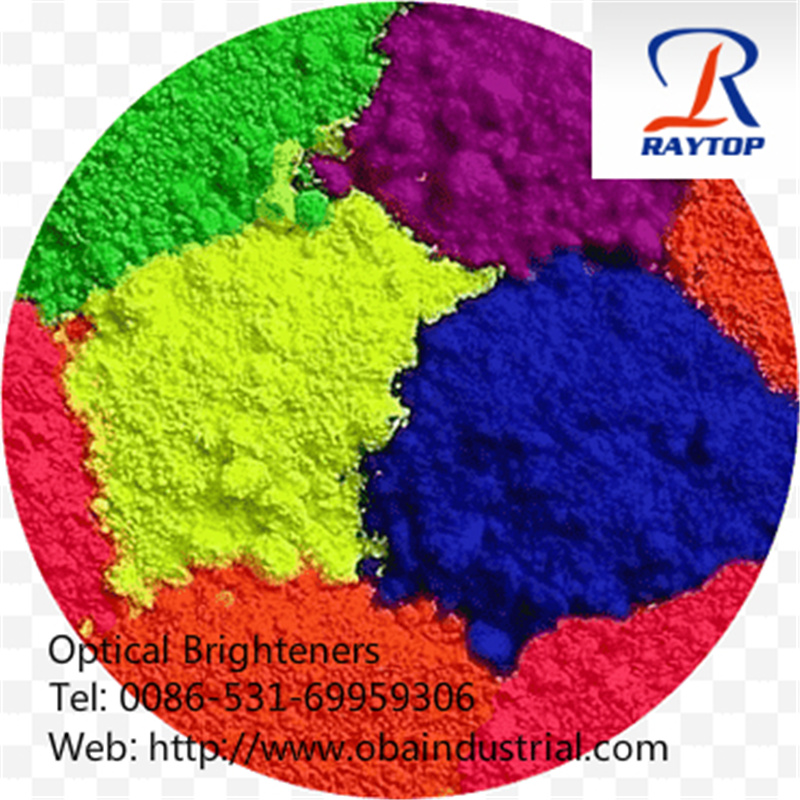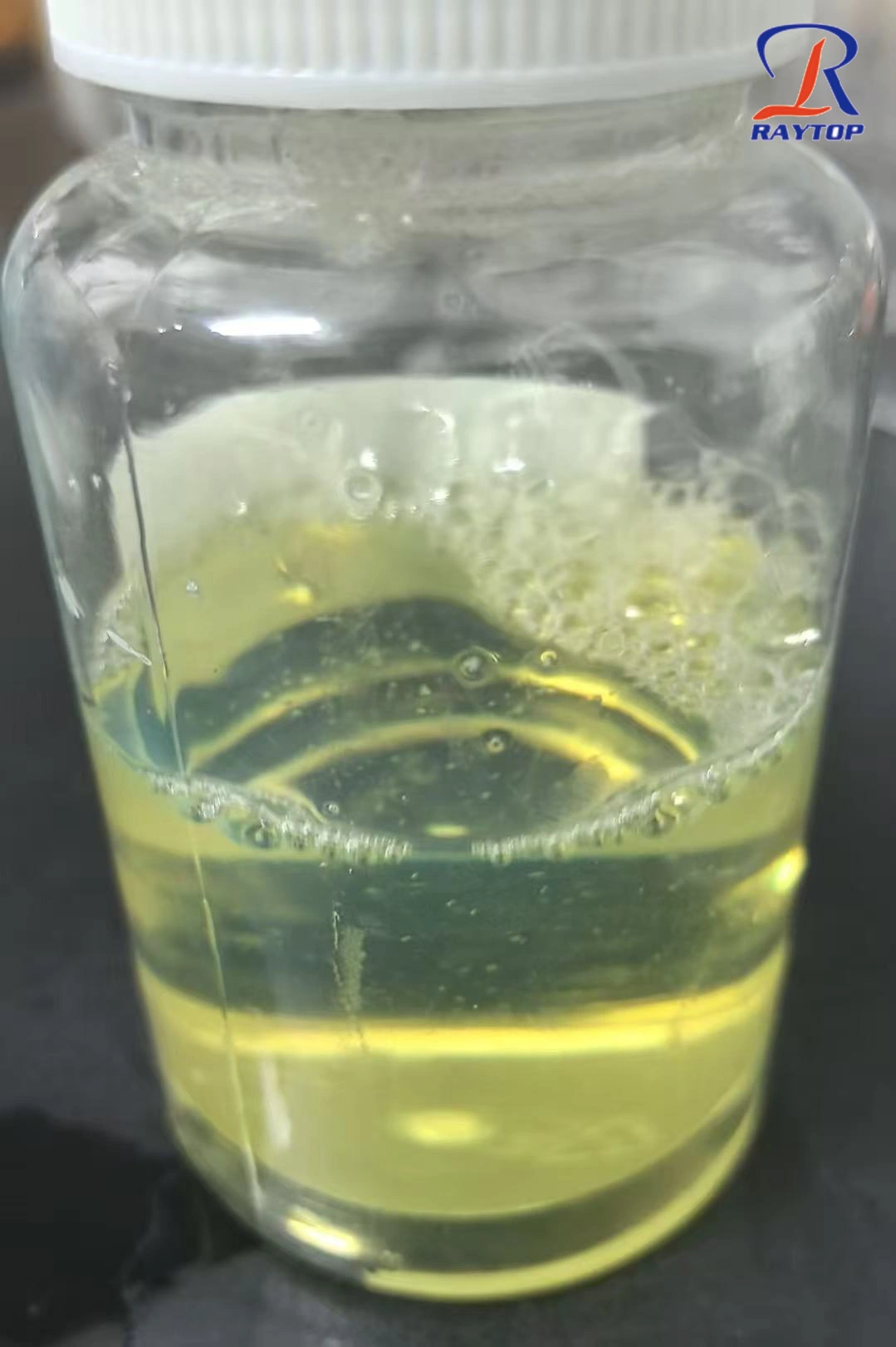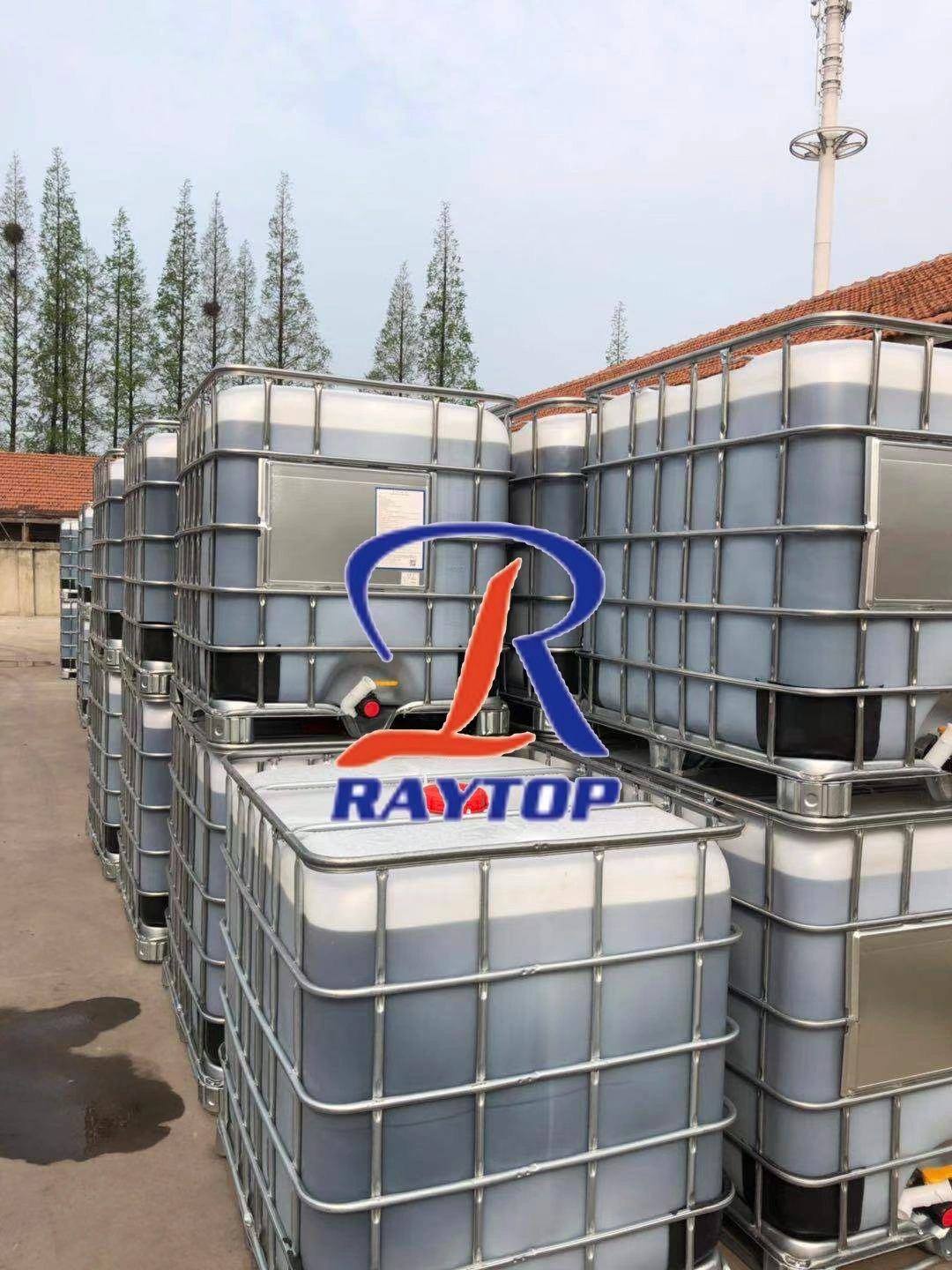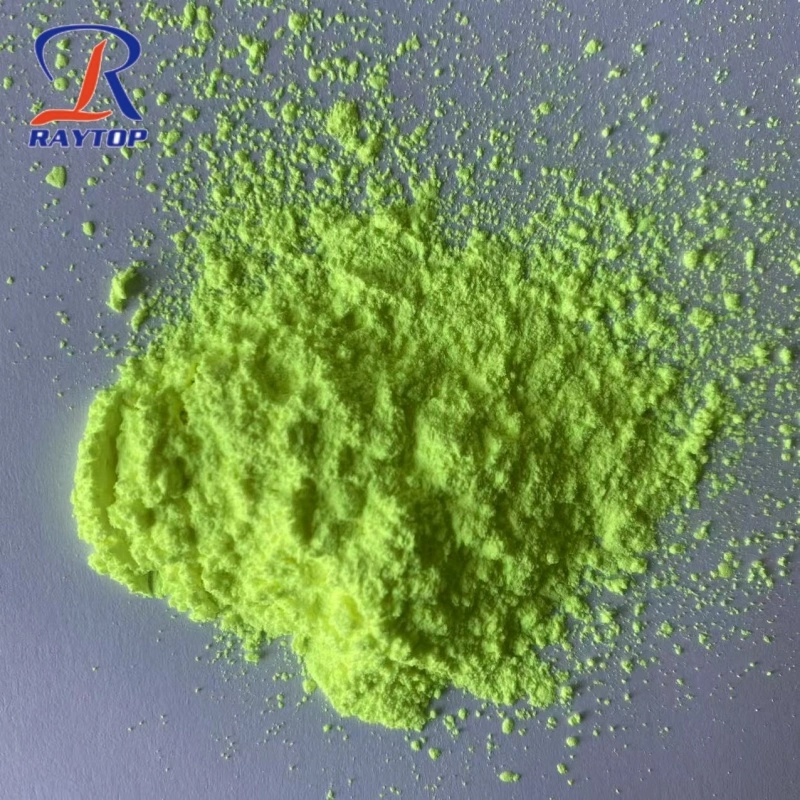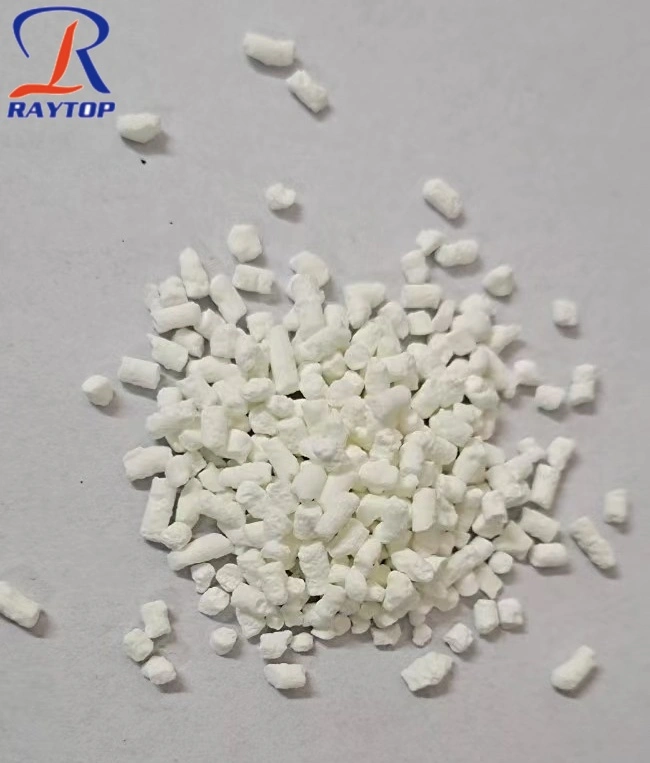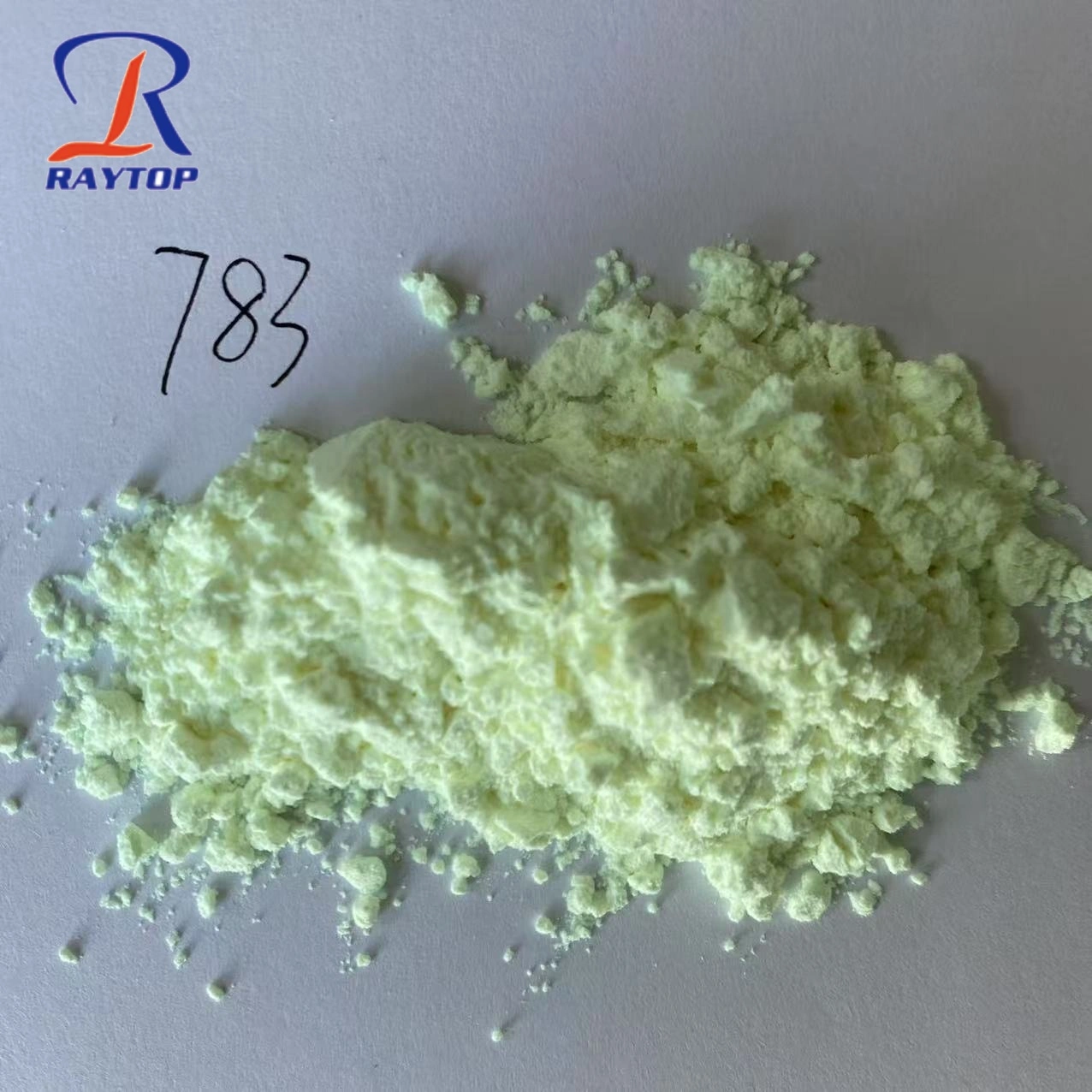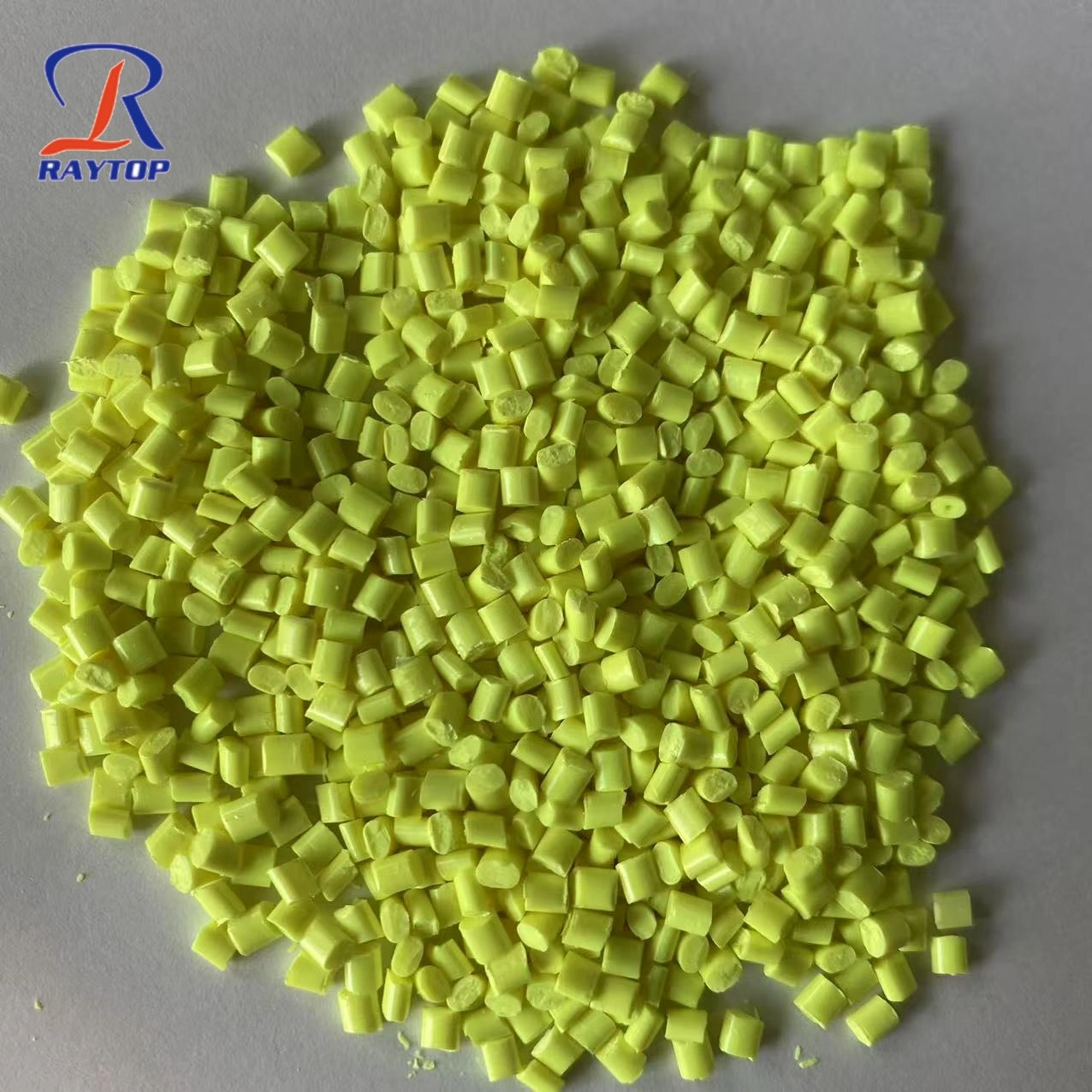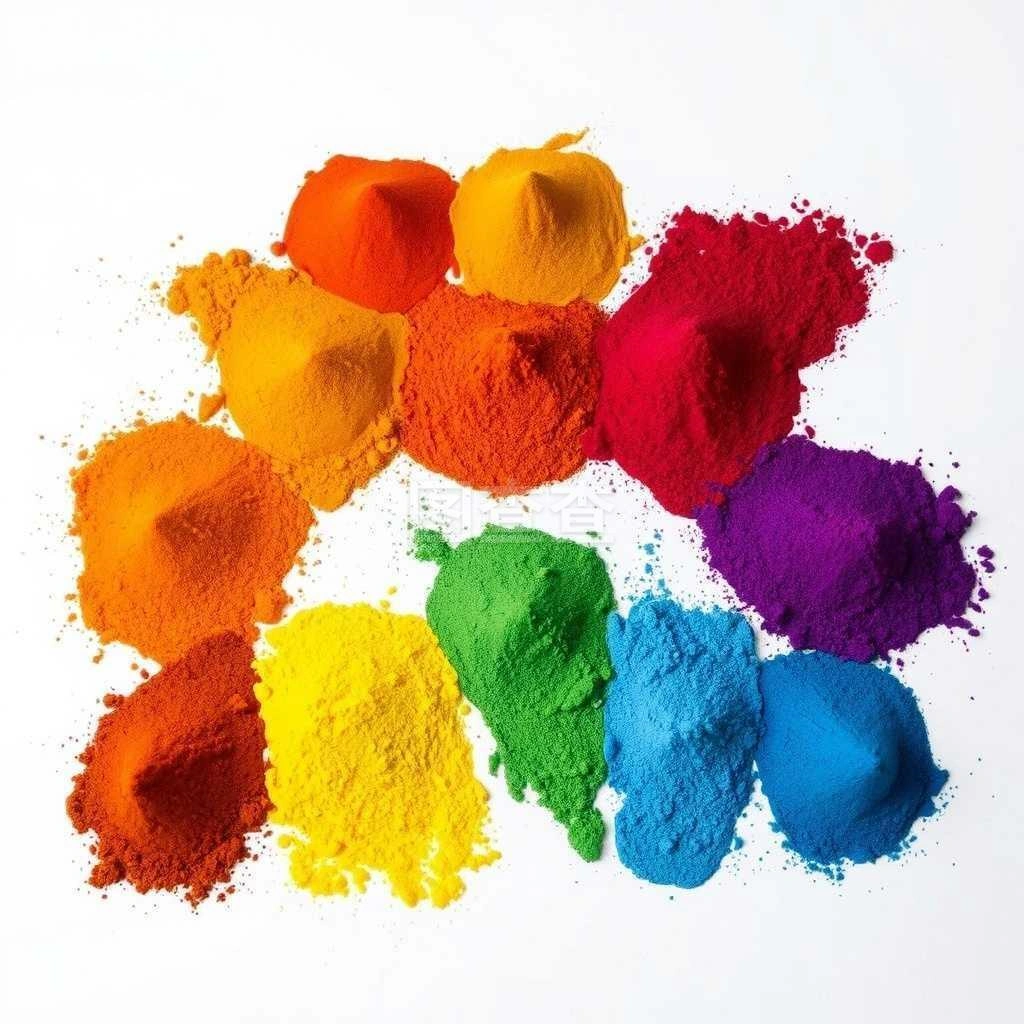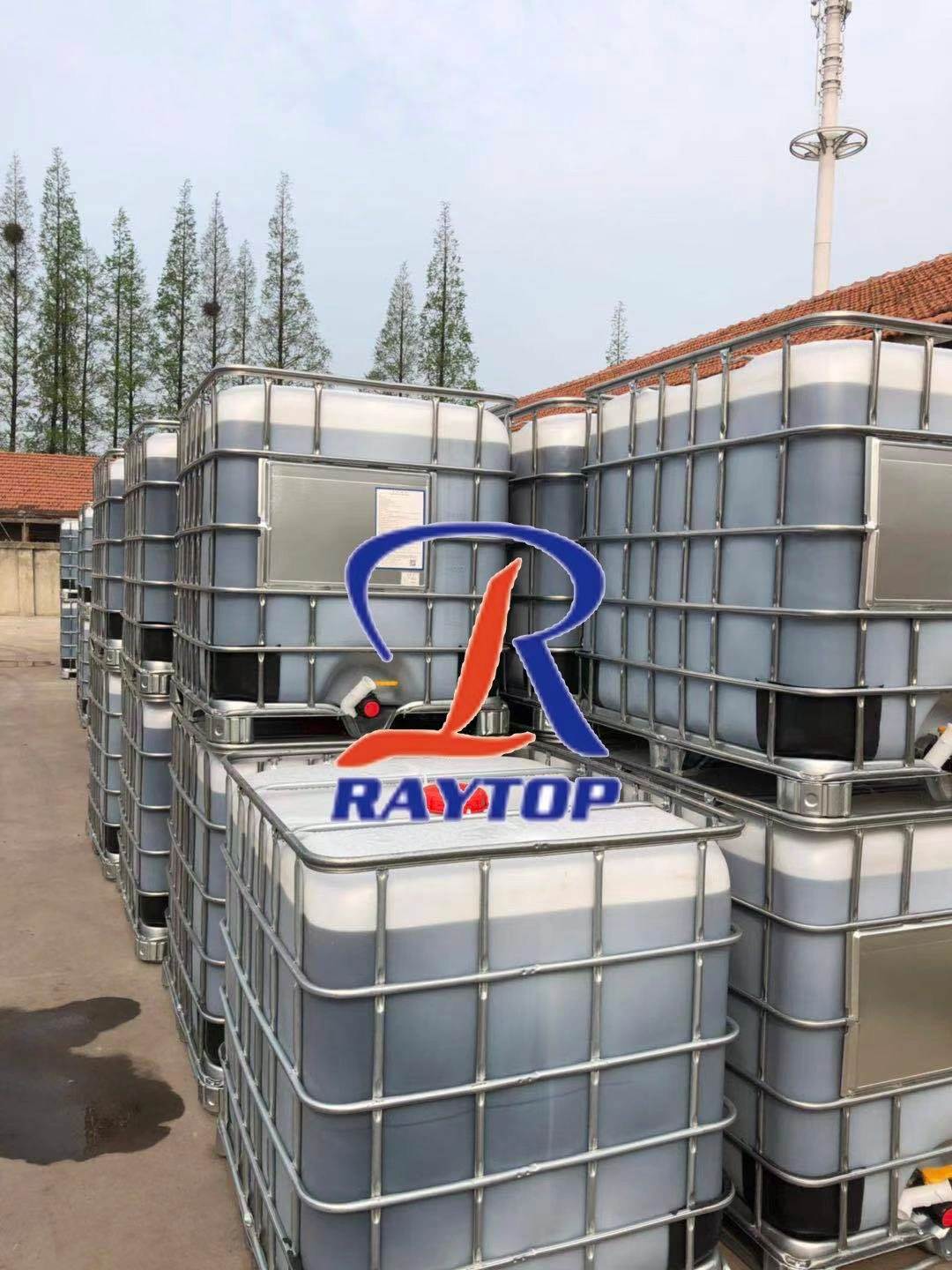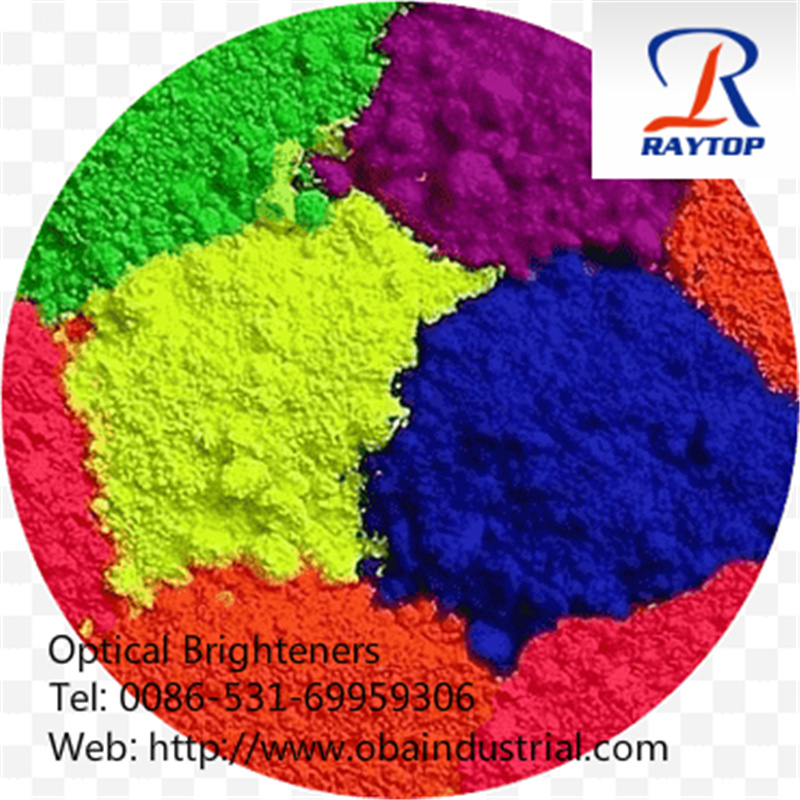
Many users have vague concepts about optical brighteners, titanium dioxide, and bleaching agents. They often struggle to understand the specific differences between these three. Today, Raytop Chemical will provide a detailed explanation of their distinctions.
I. Optical Brightener: The "White Magician" That Manipulates Light
Definition and Essence
An optical brightener, also known as a fluorescent brightener or "white dye," is a type of complex organic compound. Its defining characteristic is its ability to absorb invisible ultraviolet (UV) radiation emitted by objects and re-emit violet-blue fluorescent light. This fluorescent light compensates for the yellowish tinge in materials, making them appear visually whiter to the naked eye.
In simple terms, an optical brightener acts as a "light magician"—it does not alter the material’s inherent color but enhances its perceived whiteness by "absorbing dark light and emitting bright light."
Principle of Brightening
The function of an optical brightener revolves around converting invisible UV radiation absorbed by the material into violet-blue fluorescent radiation. This fluorescent light complements the material’s original yellowish radiation, resulting in the perception of "pure white" under sunlight.
Natural materials often appear slightly yellow because they absorb some blue light (wavelength 450-495 nm) due to impurities or structural defects. Optical brighteners address this by:
Absorbing UV Radiation: UV light, though invisible, is absorbed by the conjugated double bonds in the brightener’s molecular structure.
Emitting Violet-Blue Fluorescence: The absorbed energy is released as light with a wavelength of 400-500 nm (violet-blue).
Color Compensation: This violet-blue light mixes with the material’s original yellowish light, creating a "bright white" visual effect (similar to how red + green = yellow in color theory).
Applications: The Invisible "Whitening Expert" Across Industries
Optical brighteners are valued for their safety and efficiency, making them indispensable in industries where high whiteness is critical:
Textiles: Cotton, linen, polyester, and other fabrics often retain a yellowish hue even after bleaching. Adding 0.1%-0.5% optical brighteners (e.g., stilbene-based types) can boost whiteness by 10%-20%, ideal for high-end shirts, bedding, and apparel.
Plastics and Rubber: White plastics (e.g., PVC, PE) tend to yellow over time due to UV aging. Optical brighteners slow this yellowing, extending the material’s "whiteness retention period."
Paper and Coatings: Lignin residues in paper fibers cause yellowing. Brighteners enhance paper whiteness (e.g., newsprint whiteness increases from 70% to over 85%).
Daily Chemicals: Detergents and fabric softeners use optical brighteners to maintain a "bright white" appearance in washed clothes (beyond mere stain removal).
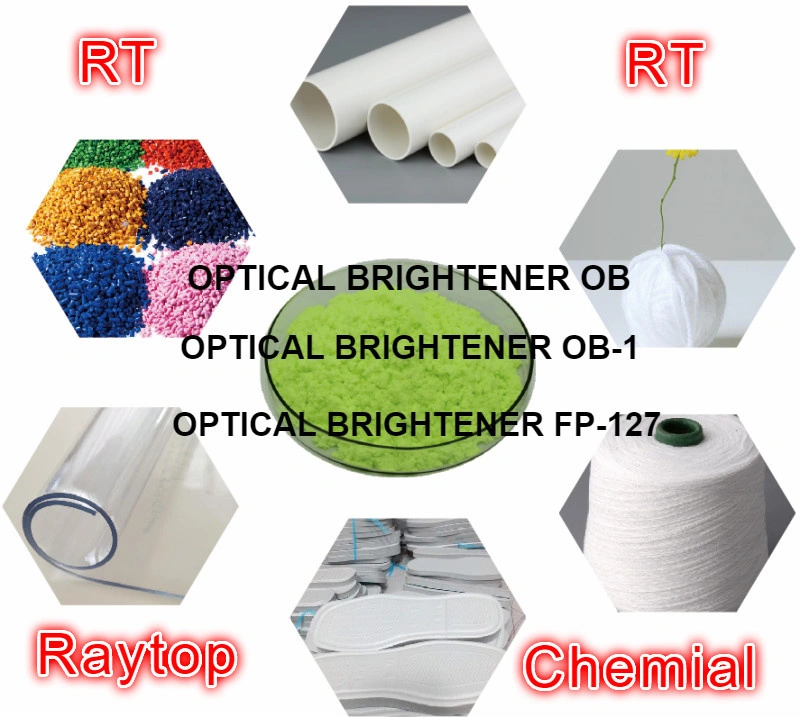
II. Titanium Dioxide: The "White Pigment King" Relying on Coverage
Definition and Essence
Titanium dioxide (TiO₂) is an inorganic chemical pigment and an excellent white pigment. It boasts reinforcing, anti-aging, and filling properties, finding wide use in rubber products, plastic pipe profiles, and more. Its primary role is as a "covering agent."
Principle of Whitening
Titanium dioxide achieves whitening through high covering power and light scattering:
Covering Power: When dispersed in a medium (e.g., plastics, coatings), its dense particle structure blocks light penetration, preventing underlying yellowish or colored layers from showing through.
Light Scattering: TiO₂ scatters visible light with exceptional efficiency (its scattering coefficient is twice that of zinc oxide), creating a uniform "pure white" visual effect.
Applications: The Versatile "White Agent" Across Fields
Beyond whitening, titanium dioxide’s "reinforcing, anti-aging, and filling" properties make it a cornerstone in multiple industries:
Plastics and Rubber: Used as a white pigment in pipes, films (e.g., agricultural mulch), enhancing strength and weather resistance.
Coatings and Inks: Adding 10%-20% TiO₂ to latex paints covers wall base colors, delivering a uniform white finish.
Food Additives: Approved as a food colorant (E171), it enhances the whiteness of products like infant formula and candies.
Cosmetics: Used in foundations and sunscreens as a physical sunscreen (reflecting UV rays) while brightening skin tone.
Paper Manufacturing: Applied in coated papers (e.g., art paper) to boost whiteness and gloss.
Limitations: The Natural Drawbacks of "Coverage"
Despite its superior covering power, titanium dioxide has inherent limitations:
Uneven Coverage: Poor dispersion (e.g., particle agglomeration) may cause localized "white spots" (e.g., on plastic surfaces).
Cost Sensitivity: High-purity TiO₂ (e.g., rutile type) is expensive; excessive use increases production costs.
Single Function: It only "covers colors" and cannot address yellowing caused by material aging (e.g., oxidation).
III. Bleaching Agents: The "Chemical Revolutionaries" Achieving Whitening Through Reactions
Definition and Essence
Bleaching agents are chemicals that remove or lighten colors by oxidizing or reducing colored molecules (chromophores) into colorless or pale substances, thereby whitening objects.
Principle of Whitening: Destroying Chromophores Through Redox Reactions
The color of materials arises from "chromophores" (e.g., conjugated double bonds, aromatic rings, nitro groups) in their molecules. Bleaching agents disrupt these chromophores through two primary mechanisms:
Oxidative Bleaching (common in strong oxidizers): Agents like sodium hypochlorite (NaClO) and hydrogen peroxide (H₂O₂) release reactive oxygen (O), attacking the conjugated double bonds of chromophores, breaking or saturating them to eliminate color.
Reductive Bleaching (common in reducing agents): Agents like sodium sulfite (Na₂SO₃) and sodium dithionite (Na₂S₂O₄) donate hydrogen atoms (H) to chromophores, converting them into colorless compounds.
Applications: The "Deep Whitening" Solutions Across Industries
Bleaching agents’ "chemical decolorization" makes them essential for applications requiring thorough color removal:
Textiles: Natural pigments in cotton and linen (e.g., flavonoids) are removed using bleaching agents like sodium hypochlorite to produce "stark white" fabrics.
Paper Manufacturing: Lignin in wood causes yellowing. Bleaching agents (e.g., chlorine dioxide) decompose lignin to produce "bleached wood pulp."
Food Processing: Flour’s natural yellowish hue (from carotenoids) is lightened using bleaching agents (e.g., azodicarbonamide) to achieve "snow-white" flour.
Water Treatment: Bleaching agents remove algae and organic matter causing discoloration in water (e.g., landscape water treatment).
Controversies and Limitations: Balancing Safety and Efficacy
Bleaching agents’ "chemical attack" approach raises safety concerns:
Toxicity Risks: Strong oxidizers (e.g., sodium hypochlorite) may leave residues that irritate skin or respiratory systems.
Nutrient Loss: Food bleaching agents (e.g., sodium sulfite) can destroy vitamins (e.g., vitamin B1).
Environmental Impact: Chlorine-based bleaching agents (e.g., dioxin precursors) may pollute water. Thus, strict regulations (e.g., EU bans on bromates in flour) govern their use.
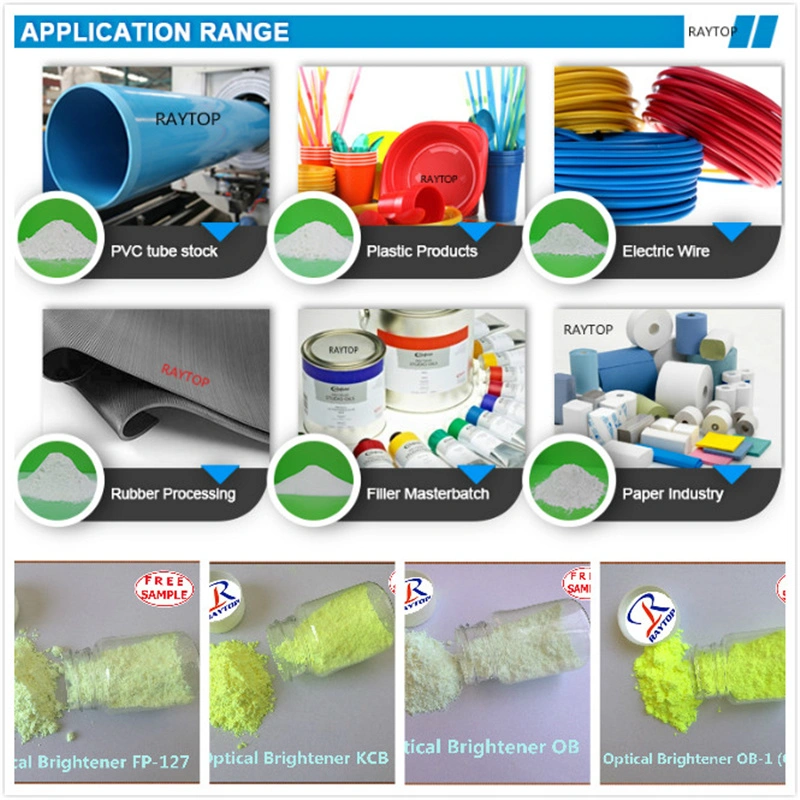
IV. Comparison: Physical Whitening (Optical Brighteners & Titanium Dioxide) vs. Chemical Whitening (Bleaching Agents)
The table below summarizes the core differences:
| Dimension | Optical Brightener | Titanium Dioxide | Bleaching Agent |
|---|---|---|---|
| Mechanism of Action | Physical light emission (absorbs UV, emits blue fluorescence) | Physical coverage (high covering power + light scattering) | Chemical reaction (destroys chromophores) |
| Alters Material Essence? | No (only modifies visual perception) | No (only covers underlying color) | Yes (permanently alters molecular structure) |
| Whitening Effect | Uniform, natural (fluorescence compensates yellowing) | Potentially uneven (depends on dispersion) | Thorough, significant (chemical decolorization) |
| Light Fastness | High (fluorescence unaffected by light) | Moderate (long-term UV exposure may degrade) | Moderate (some bleaching agents degrade easily) |
| Typical Applications | Textiles, plastics, daily chemicals | Coatings, plastics, food, cosmetics | Textiles, paper, food, water treatment |
V. Synergistic Effects: Industrial "Whitening Combo"
Though distinct, these three are often used synergistically in industrial applications to enhance results:
Textiles: First, bleaching agents remove natural pigments from fibers. Then, optical brighteners compensate for residual yellowing. Finally, titanium dioxide boosts coverage, achieving a "snow-white + glossy" dual effect.
Plastics: Adding titanium dioxide (for coverage) and optical brighteners (to counter UV-induced yellowing) to white plastics significantly extends their "whiteness retention period."
Paper Manufacturing: After bleaching pulp, if it still appears yellowish, adding a small amount of optical brightener compensates via fluorescence, reducing titanium dioxide usage (lowering costs).
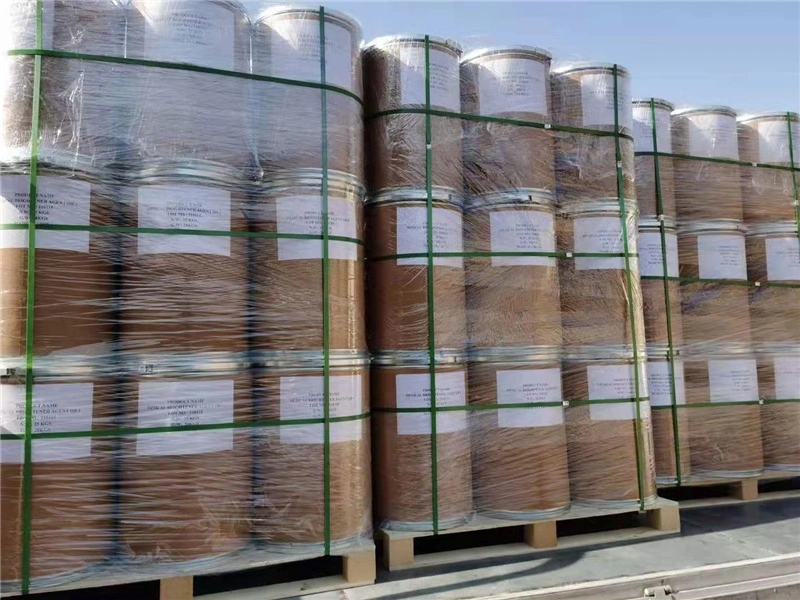
Optical Brighteners vs. Titanium Dioxide — Market Overview
Optical Brighteners
Global Market Value (2024): Approximately USD 1.3–1.5 billion, with a steady CAGR of 5–6%.
Major Producers: Key industry players include BASF, Clariant, Archroma, Eastman, and Brilliant Colors.
Regional Demand: Highest demand growth in Asia–Pacific, driven by the booming textile and packaging sectors. Growing adoption in the Middle East & Africa is also notable—for paper and consumer goods manufacturing.
Industrial Cost: Ranges between USD 3–8 per kg, depending on purity and application specifics.
Titanium Dioxide (TiO₂)
Global Market Size:
2024: Approximately USD 22.3 billion
2023 estimates range between USD 20.4–21.6 billion, with projections reaching USD 31.8–33.8 billion by 2030–2032 .
Forecast CAGR: Ranges from 6.5% to 7.1% across various industry reports .
Regional Leadership:
Asia–Pacific dominates with ~USD 12 billion in 2024 and strong growth momentum
Middle East & Africa: Moderate yet rising demand, propelled by infrastructure developments and increased local manufacturing. For example, the Middle East & Africa Anatase TiO₂ market stood at USD 3.51 million in 2025 (note: this refers to the Anatase segment specifically) .
Top Producers: Leading manufacturers include Tronox, Chemours, Evonik, Venator, and Argex Titanium.
Side-by-Side Comparison
Feature Optical Brighteners Titanium Dioxide (TiO₂) 2024 Market Size USD 1.3–1.5 billion USD 22–22.3 billion CAGR (Forecast) ~5–6% ~6.5–7.1% Primary Applications Textiles, paper, detergents, plastics Paints, coatings, plastics, paper, cosmetics, inks Major Regions Asia–Pacific, Middle East & Africa Asia–Pacific, North America, Europe Leading Producers BASF, Clariant, Archroma, Eastman Tronox, Chemours, Evonik, Venator, Argex Titanium, Cristal Cost (Wholesale) USD 3–8 /kg Varies by grade and application (typically higher) Titanium Dioxide commands a much larger and faster-growing global market, thanks to its essential role as a pigment across diverse end-use industries.
Optical Brighteners serve a narrower niche—enhancing whiteness and appearance—but remain vital in specific sectors, particularly textiles and paper.
Both markets are increasingly focused on sustainability and supply-chain optimization, but TiO₂ faces more noticeable regulatory pressures due to anti-dumping measures and its ubiquitous use.
Conclusion: Whitening—A Matter of Scientific Precision
Optical brighteners, titanium dioxide, and bleaching agents all achieve "whitening," but they are distinct "weapons" in the industrial toolkit:
Optical brighteners are "light regulators," enhancing visual whiteness through fluorescence.
Titanium dioxide is a "white mask," hiding underlying colors via physical coverage.
Bleaching agents are "color destroyers," permanently altering material chemistry to remove color.
Choosing the right "whitening solution" depends on specific needs: optical brighteners for natural, uniform whiteness (e.g., high-end textiles); titanium dioxide for high-coverage applications (e.g., plastic pipes); and bleaching agents for thorough decolorization (e.g., flour processing).
Understanding their differences reflects the intricate balance between material properties, functionality, and safety in industrial science—after all, "whitening" is never just about "turning white"; it’s a precise interplay of chemistry, material science, and end-user needs.
Through the analysis, you should see that both optical brightener and titanium dioxide are physical whitening, and do not react with other raw materials, while bleaching agent achieves whitening through chemical reaction. There are some differences in the physical whitening of fluorescent brightening agent and titanium dioxide. Titanium dioxide is mainly for covering, and there may be problems such as uneven covering and insufficient covering strength. The optical brightener has the effect of light absorption and reflection to whiten, the whitening effect is more uniform, and the light fastness is high. Some manufacturers will put the fluorescent whitening agent and titanium dioxide together to use, the effect is much better.
